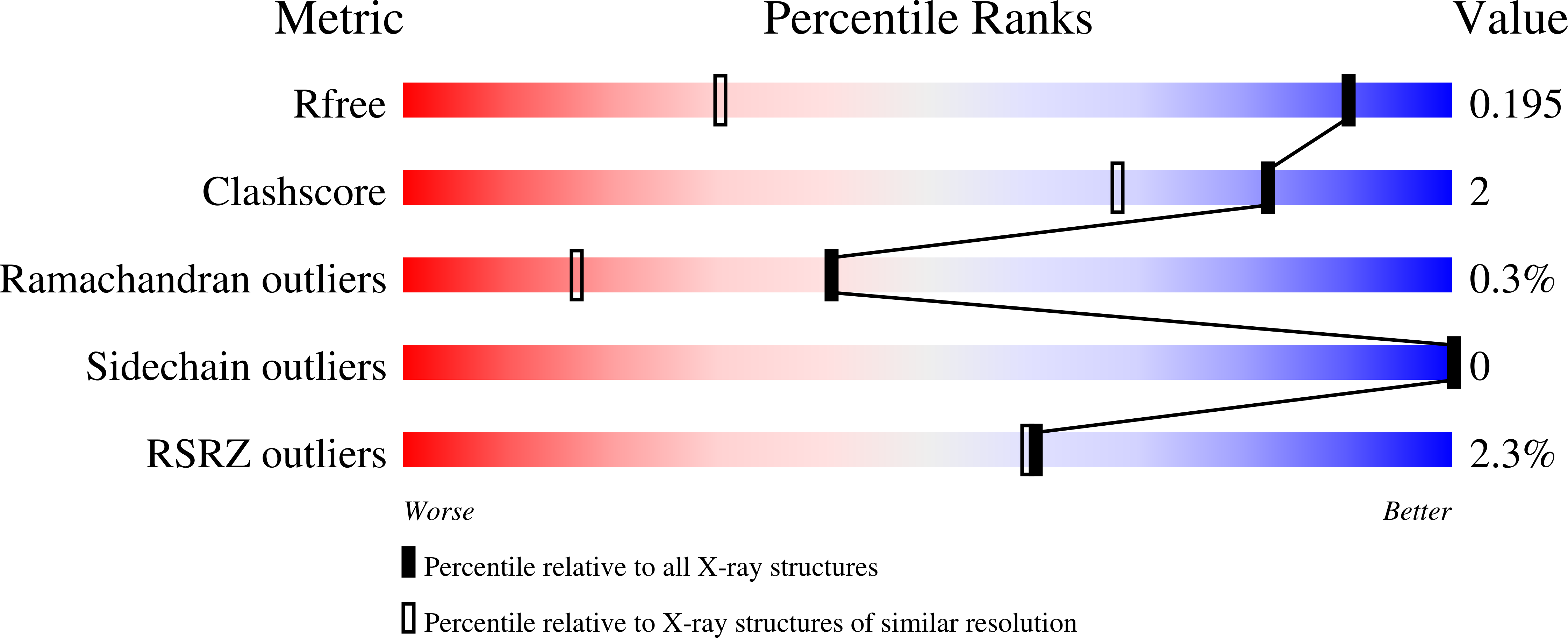
Deposition Date
2020-03-31
Release Date
2021-01-20
Last Version Date
2023-10-18
Entry Detail
PDB ID:
6WCY
Keywords:
Title:
N160D Deamidation Mutant of Human gammaD-Crystallin
Biological Source:
Source Organism:
Homo sapiens (Taxon ID: 9606)
Host Organism:
Method Details:
Experimental Method:
Resolution:
1.20 Å
R-Value Free:
0.19
R-Value Work:
0.16
R-Value Observed:
0.17
Space Group:
P 21 21 21


